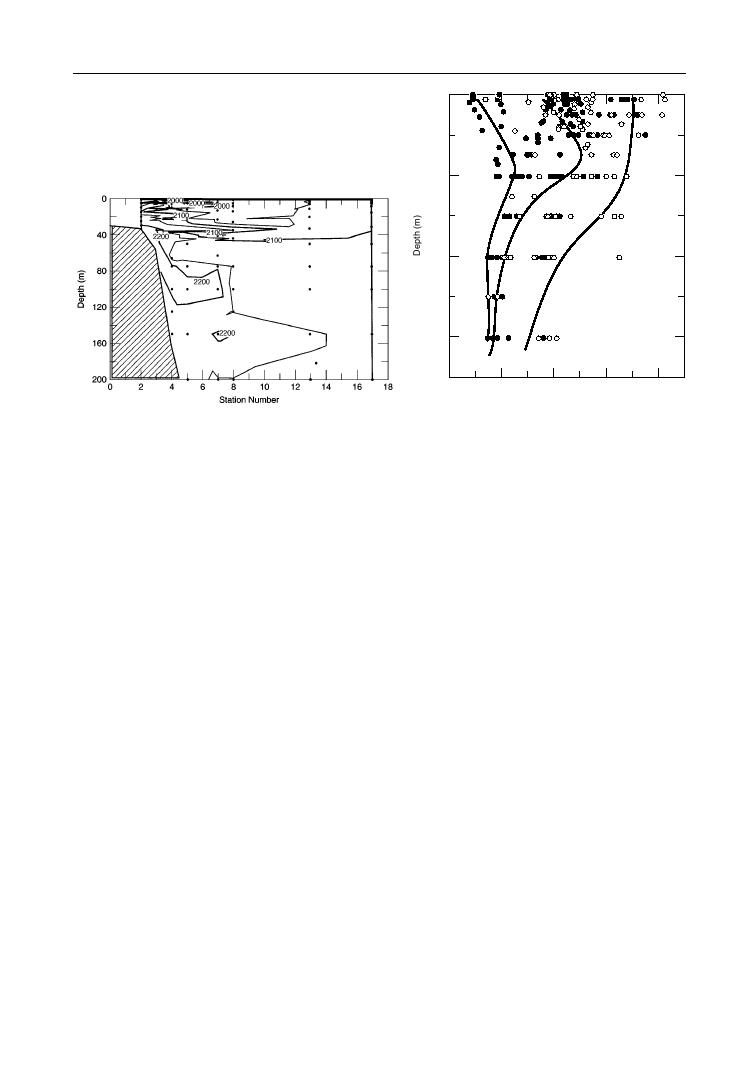
1994 Arctic Ocean Section
0
100
200
300
2100
2200
2300
2400
2500
ΣCO2 (M/kg)
Section of ΣCO2 (mM/kg) from the Chukchi shelf on the left to
Profiles of ΣCO2 (mM/kg) from both the AOS-94
the interior of the Canada Basin on the right. The data have
cruise and the 1993 U.S. Navy submarine cruise.
been normalized to a salinity of 35 psu.
The solid lines represent the average profiles for
the stations in the vicinity of the Lomonosov Ridge,
Chukchi borderlands or central Canada Basin (right
to left, respectively).
The ΣCO2 maximum associated with the upper halocline is most obvious
at stations near the shelf break of the Canada Basin. However, by the northern
end of the Canada Basin, in the vicinity of the former T3 ice station, only
slight increase between 100 and 150 m. Finally, by the Nansen Basin, little
evidence of any subsurface maximum in nutrient concentrations of any kind
remains.
Perhaps the most significant results of my sampling thus far have been in
of the Canada Basin. With the effect of salinity removed, the large gradient
between the shelf and oceanic regions is clear. The section reflects the contin-
uity between shelf and slope as high-ΣCO2 water (greater than 2200 M/kg)
detaches from the shelf edge and enters the upper halocline at approximately
100 m. This continuity presumably follows an isopycnal surface between the
two regions.
Additional ΣCO2 data are available for the Canada Basin from a U.S. Navy
submarine cruise in 1993. These data suggest that a significant amount of
inorganic carbon has accumulated under the ice in the central Canada Basin,
where the ΣCO2 content of the upper 300 m is at least 30 moles greater than
the surrounding regions. Thus, the Canada Basin may be an important reser-
voir for oceanic carbon. Analysis is now focused on isolating the rate at which
shelf carbon is supplied to central regions and the ultimate role of the Arctic in
the global carbon budget.
46



 Previous Page
Previous Page
